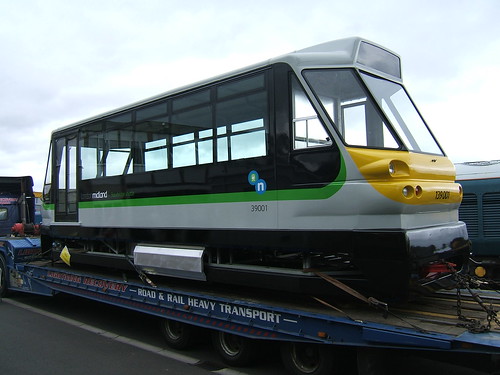
Preserved Battery Electric locomotive at MOSI: General view in Central Electricity Generating Board livery.
The second 'electric' was not a conventional electric locomotive but a narrow-gauge prototype 'flywheel electric' tram made by Parry People Movers. John Parry had established a business designing and making simple, practical tools for use in developing countries. He became interested in cheaper ways of transporting people by rail, particularly in urban areas, and he became impressed by the amount of energy a large, spinning flywheel could store. I'd heard of similar flywheels used in certain telephone exchanges to provide a 'no break' supply. Continuously spun by an incoming power source until that supply failed when the rotational energy of the flywheel was used to generate power for a short time to keep the telephone equipment powered, allowing a short time for a standby generator driven from an internal combustion engine to start and take over the electrical load.
In John Parry's protototype tram, when in the station, a connection to an electric supply powered an electric motor connected to a large flywheel which absorbed energy by being spun at high speed. This stored energy was then used to drive the tram to the next station, where the flywheel was 'spun-up' again electrically.
The prototype I drove was a narrow gauge single-station loop around a garden centre but they managed to get a similar system installed on Network Rail.

Parry People Mover 139 001 used between Stourbridge Junction and Stourbridge Town (pictured in 2011 in London Midland livery when displayed at 'Tyseley 100')
John Parry died 17-Feb-2023 aged 85
British Rail Class 139 (Wikipedia)
Flywheel energy storage (Wikipedia)
